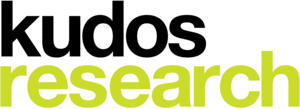We did indeed start with thoughts and words for Paris, and with an acknowledgement that sometimes the best defiance is to keep living.
The tone of the conference was one of hope and positivity. Hope for the future of market research, hope for (and the inevitable high interest in) millennials, and a positive attitude toward the outlook for qualitative research in particular. Though of course, not without challenges to be overcome.
We started the conference with a discussion of laughter and happiness, and I found particularly interesting the idea that humour can disrupt System 1 thinking and force a more conscious evaluation. Brands have been doing this for years of course, with varying appeal, but a reminder of the value of laughter was certainly welcome on Monday morning. And given the continued relevance and prevalence of Behavioural Economics throughout the event, a nice reminder that it isn’t just a set of tools and theory, but an invitation to entertaining practical applications.
Digital technology was a major feature of the conference. Online communities are clearly on the rise globally, being used for projects small and large, though not always explicitly referred to or run as communities – digital qual is on the rise. The flexibility and accessibility of communities and online qual was discussed in projects for Facebook, Danone, and Air New Zealand. A subject close to my heart, it was great to see the breadth of projects and clients embracing community interaction as a method not only to see and hear from consumers, but to really get to know their lives and also to feedback to them the interpretation of insights – just to check we’re all on the same page.
Consumers are super savvy these days – it seems that nearly everyone has some understanding of brands and ideas about how they want to interact with them. My favourite talks around this idea were two sessions about ‘Makers’, one from GIM in Germany and the second from MARE Research in the Netherlands. Makers are people who design, build and create their own things – whether professionally or in the kitchen on a Tuesday evening, the idea of DIY has infected the zeitgeist. And the people at the forefront of this movement aren’t just creators – they’re also great respondents! They are creative and interested in the world, able to understand and imagine great things for brands, and, perhaps particularly among millennials, have a fantastic bullshit filter for checking back in on your insights and making sure it all still makes sense.
And it was clear throughout the conference that making sense of consumers these days is not just about one quant or qual study or methodology or a series of well moderated questions. It’s mixed methods on steroids. No one is ever dealing with a single data set to make decisions any longer – they’re using previous research, consumer data, a multi method study commissioned to answer a set of questions, and their own experiences to boot, no doubt.
The idea of researchers being in a position to triangulate or even ‘quadrangulate’ these multiple inputs came up several times throughout the conference and one of the things I found really interesting and challenging was the idea that we shouldn’t just find the story. Shobha Prasad of Drshti Research Services talked about not only finding the key story, but following all the less convenient, neat pathways to ensure that you’ve covered all your sightlines – not just falling into the notion that anything which might be outlier is therefore irrelevant or can’t teach us something. Of course we prefer to have a neat and clear story – and we should if we want anyone to listen – but we also need to know where those alternative pathways take us, to make sure there isn’t another story lurking and waiting to be told. Ultimately, being a creative and effective researcher isn’t just about telling the best or clearest story, it’s about helping clients connect all the dots and joining up all the information we have to hand around a particular problem.
Once we’ve understood the myriad ways people are breaking the mould, the conversation carried on over to how we help brands and businesses understand and live with these people. Moving in this direction, the conversations that really caught my interest were about using digital media to disseminate insights and make them live on within a business. BAMM gave an interesting presentation with Shell about creating viral insight campaigns within a client’s business – using the lessons of social media to tease and tempt client stakeholders – and ultimately to inspire them to not only act on the insights in a practical way, but to live the ideas they present and for the consumers they represent. Another example of this I loved was from TRA in New Zealand who built a fully interactive online magazine for a syndicate of clients to help them get to know their audience better – immersion and ethnography carefully curated and disseminated via the web and a printed magazine, rather than a PowerPoint deck.
Issues that came up over and over, and need further addressing, included recruitment (which Graeme Lawrence, programme committee chair picked up on in his final round-up). Finding the right respondents in the right places is clearly a growing challenge – we no longer want heads of families or young people – the specificity of attitudes and behaviours is ever-increasing and of growing importance as brands zero in on providing a tailored and targeted experience.
While the industry keeps evolving we won’t expect this to resolve instantly or any other element of qualitative research to remain static. But it’s encouraging to see the hope and positivity of qual researchers around the globe – with brands and marketers needing us more and more to bring the emotion, the why, and the sense to the increasing proliferation of data. I left buzzing for the future.
Jennifer Arrington is a senior director at Tonic Insight








0 Comments